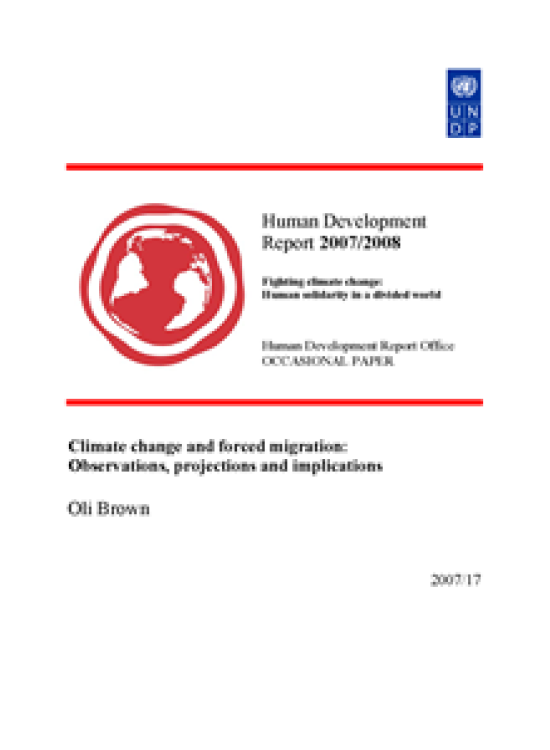Climate change and forced migration
Observations, projections and implications

Download Report by Language
Document
brownoli.pdf
(303.51 KB)
Citation
Brown, Oli. 2008. Climate change and forced migration: Observations, projections and implications. New York.
Climate change and forced migration
Observations, projections and implications
Posted on: January 01, 2008
In 1990, the Intergovernmental Panel on Climate Change (IPCC) noted that the greatest single impact of climate change could be on human migration—with millions of people displaced by shoreline erosion, coastal flooding and agricultural disruption. Since then various analysts have tried to put numbers on future flows of climate migrants (sometimes called ‘climate refugees’)—the most widely repeated prediction being 200 million forced climate migrants by 2050. But repetition does not make the figure any more accurate. While the scientific argument for climate change is increasingly confident, the consequences of climate change for human population distribution are unclear and unpredictable. With so many other social, economic and environmental factors at work establishing a linear, causative relationship between anthropogenic climate change and forced migration has, to date, been difficult. This may change in future. The available science, summarised in the latest assessment report of the IPCC, translates into a simple fact; on current predictions the ‘carrying capacity’ of large parts of the world will be compromised by climate change.

